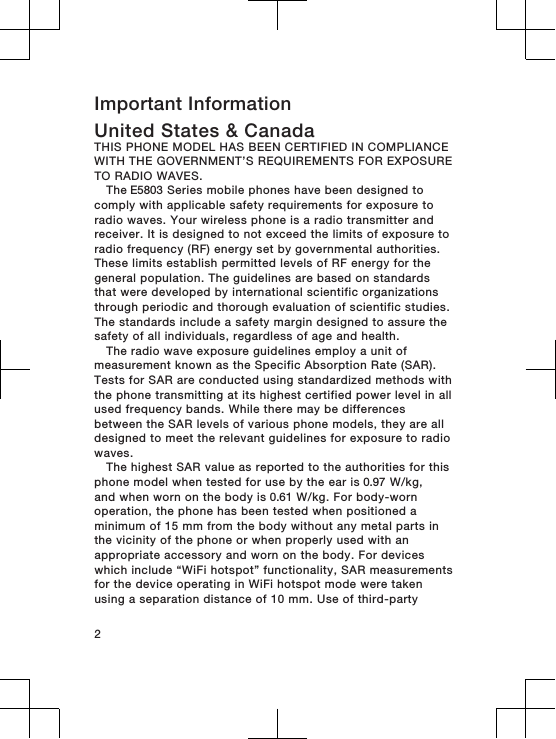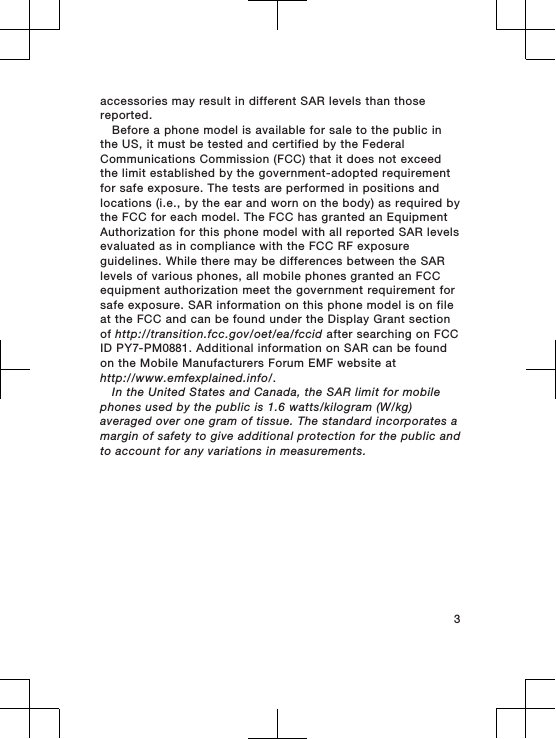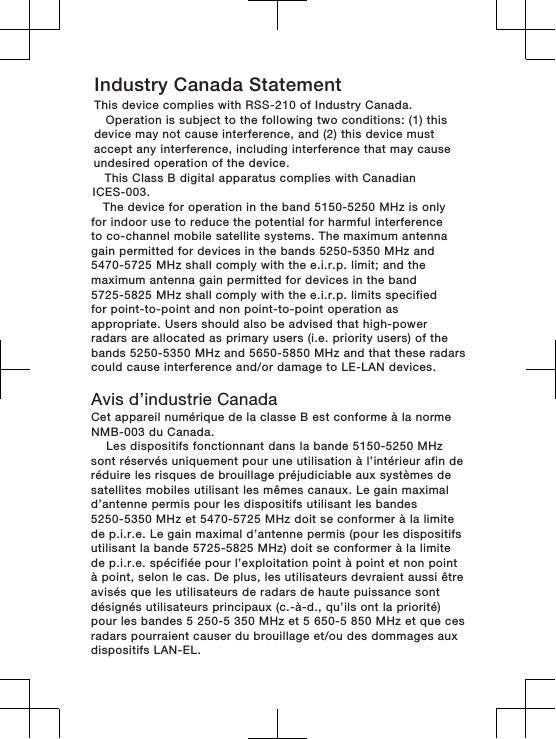Sony PM0881 GSM/WCDMA/LTE Phone + Bluetooth, DTS/UNII a/b/g/n/ac, ANT+, & NFC User Manual Sony Ericsson Mobile Communications AB
Sony Mobile Communications Inc GSM/WCDMA/LTE Phone + Bluetooth, DTS/UNII a/b/g/n/ac, ANT+, & NFC Sony Ericsson Mobile Communications AB
Sony >
Contents
- 1. User Manual
- 2. SAR leaflet
- 3. HAC Leaflet
SAR leaflet



